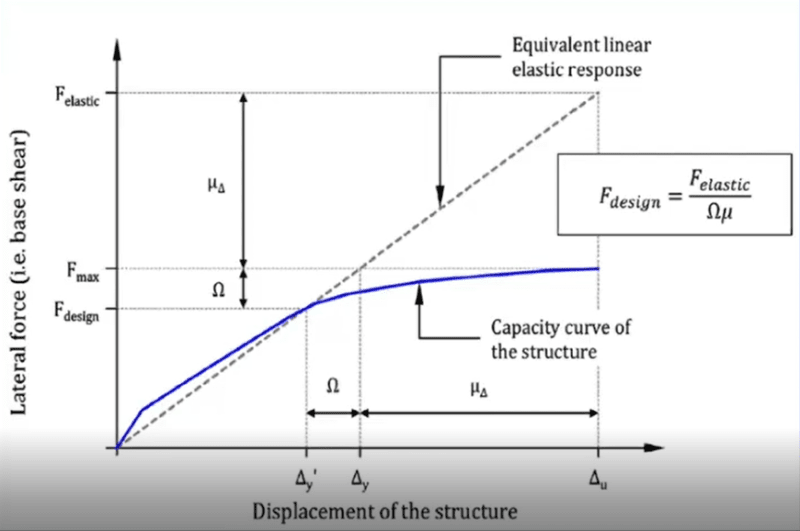I think you're getting your wires a little crossed here
Be careful of your definitions of 'elastic' seismic loads, and 'elastic' structural analysis software
'Elastic' in seismic senses means that there is an assumption of no plasticity i.e. nothing yielded, nothing broken
You release the load and it goes back to zero displacement
'Elastic' structural modelling just means that the computer applies a load and does basic maths to give a deflection (like applying pl^3/3EI for a cantilever or whatever)
If you're starting with (say) a load of 100kips (look at me go with my US units) and reducing it to 50kips due to your R factor, your computer model will give you half the deflection
Base computer models are not smart enough to know whether anything went ductile, or how that ductility influenced the result - that's your job as a designer
In the case of SAP2000, there is an option to consider plastic design (other software does this too)
I'm familiar with the concept though not SAP specifically - basically, you can define complicated parameters for all your materials etc to inform the machine of how your elements perform as they start to yield (hysteresis loops, post-elastic behaviour, yield rotations of beams and whatever else)
The computer can then iterate its way through and produce a more realistic output of deflection, forces, etc, for your structure with plasticity occurring
However, this is highly complex and time consuming and should not be done unless you know what you are doing/have suitable oversight
To make it simple, codes have factors such as the Cd you mentioned to fudge your 50kips profile back up to represent the actual inelastic displacement
However, these are just fudges and do not necessarily reflect the true seismic performance - they allow us, as designers, to ballpark these effects in a cost-effective and timely way

